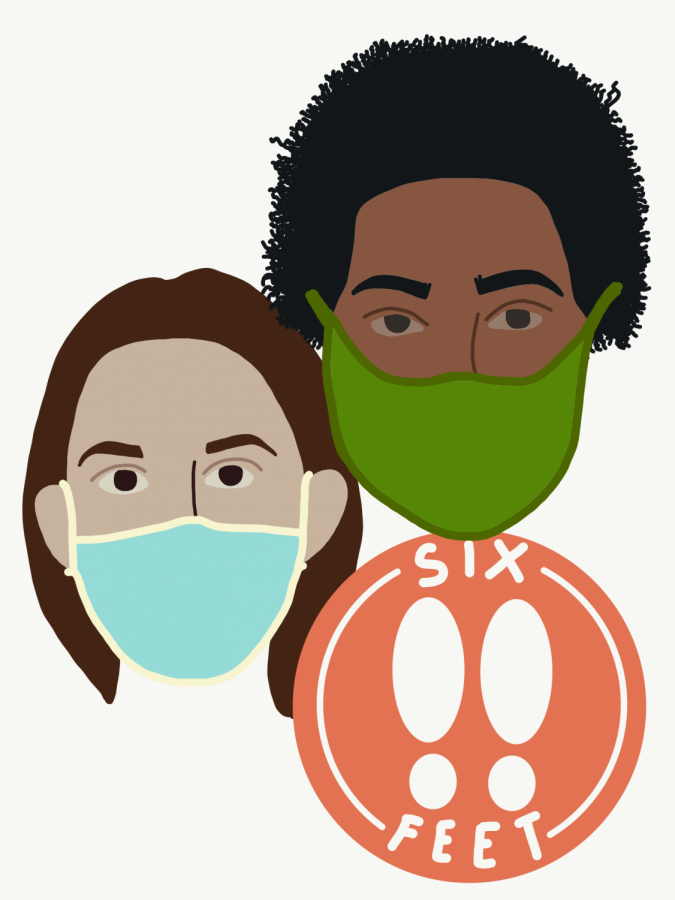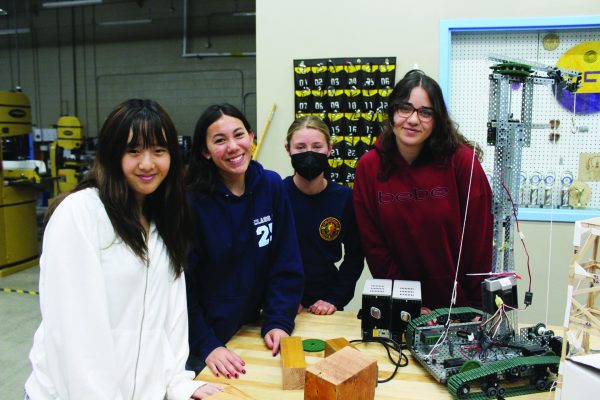This is What’s up With the New Social Norms
New social norms include wearing face masks and keeping a 6 feet distance from others in public places.
September 21, 2020
COVID-19, more formally known as the Coronavirus, or the curser of 2020, might have changed the way we do day to day tasks for the rest of our lives. Since March, people everywhere have tweaked how they live their lives, from wearing a mask every time they leave their house, to taking that extra step in really scrubbing their hands after touching any foreign surface. Even on television, commercials advertise proper social distancing and the importance of masks. We just can’t simply run away from COVID-19, so the social norms that have been forged over the last six months might be here to stay.
One can only hope that wearing a mask while going to pick up groceries or meeting up with friends is just a temporary safety precaution, but how else might masks be useful once COVID-19 is under control? From a hygienic standpoint, wearing a mask while experiencing anything contagious, from a nasty cough, to a simple cold, to the flu may be just what you need to keep yourself from spreading those not-so-fun germs. According to a Japanese travel website, those in Japan often wear masks to prevent spreading even common illnesses. “With this many people packed into this small of an area, risk of contagion and disease is much higher. Japanese are taught the importance of prevention at an early age” (nihon.com). Perhaps wearing a mask when one has anything contagious would be a beneficial permanent social norm.
No one likes to be in a crowded bus or stuck in a cramped room with poor ventilation, but for some reason, people don’t seem to mind it when they are at a concert. Even before the pandemic, mosh pits and super-packed venues were potential breeding grounds for germs and bacteria. However, the COVID-19 pandemic might have changed the way concerts are put on. England’s Virgin Money Unity Arena had the United Kingdom’s first “socially distanced concert,” complete with several metal platforms where small groups of attendees watched the live performances (cnn.com). If more venues follow suit, this change in venue structure could alter the face of live music.
The new, luxurious amount of space makes you wonder why wiggle room and comfort were ever sacrificed in the first place. Senior Camille Hicks, an avid concert-goer pre-pandemic, doesn’t miss being trampled on during a rowdy live music event: “People get really into the music — maybe too into it — and just start stepping on people and shoving and bumping.” It may be harder to allow for a comfortable amount of space at some venues, but with the success and praise for England’s social distance concert, the way we attend live events could be adjusted for the health and safety of attendees.
Most students in America are distance learning, meaning they are doing school work off campus. Although it might have been a while since students have been on campus, many students can remember the sound of sniffles or the sight of unshielded coughs and sneezes. “It’s unsettling sometimes when kids don’t want to miss school because they don’t want to miss or make-up work, so they come to school sick, and they sneeze or cough a lot. I got a really bad cough my sophomore year because someone didn’t stay home, and they spread it to a bunch of people,” explained Senior Kayla Dinh. Students often have to contemplate whether staying home and missing some days of school is necessary, which by all means is, but the excruciatingly tedious task of playing catch up tends to outweigh personal health. Once campuses open, hopefully students invest more time in staying safe at home when they feel under the weather.
As we try our best to practice healthy social norms to get out of this pandemic, it might be in our best interest to learn from what we have done right as well as wrong and figure out how we can practice good habits in the future. The new social norms we have encountered have reshaped how we live day to day, and might have introduced us into an era of healthier and safer habits.








